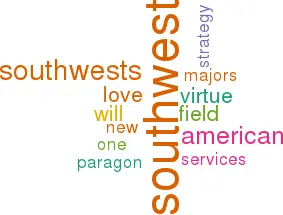Southwest - still a paragon of virtue
September 1998


Southwest’s continuing success is due to its adherence to one clear and successful strategy — low fare, no–frills, reliable, friendly, point–to point services, which utilise a homogeneous 737 fleet. The airline is regarded as a paragon of virtue; indeed, one recent report* claims that if only American operated in the Southwest manner, it would reduce its domestic costs by 35%.
But paragons of virtue can be very irritating, so analysts and rival airlines have spent a long time looking for chinks in Southwest’s armour. Now they suspect they may have found a few.
First, Southwest is facing new competition at its home base, Dallas Love Field, where historically it has enjoyed a near–monopoly. Legend Airlines — a start–up — plans to launch interstate services using regional jets, a move that poses a minor threat to Southwest but which has also induced American to apply for services out of Love Field (rather than its mega–hub at Dallas Fort Worth). This could be a major threat to Southwest, especially as American is proposing to enter the Austin route, one of Southwest’s prime profit generators.
The concern is not so much that new entrants at Love Field and other Southwest airports will undercut Southwest, but that the use of high–frequency, regional–jet service will capture some of its business travel component. Likewise, American and the other Majors cannot compete on cost and fares with Southwest, but they could use their FFPs to capture some of its business traffic.
Second, Southwest’s expansion in the east is bringing it into competition with the lower–cost subsidiaries of the majors rather than the majors themselves — Delta Express and MetroJet (US Airways’ new operation). This is at least likely to slow Southwest’s progress in these markets.
Third, Southwest could be facing the Richard Branson–syndrome. The company is so closely associated with Herb Kelleher, chairman, president and CEO (and not personally a paragon of virtue), that it is hard to conceive of the airline without him. Yet at some point in the not too distant future he will leave, and unlike at American where Bob Crandall had groomed Donald Carty, there does not seem to be a clear line of succession at Love Field.
Meanwhile, Southwest reported the highest quarterly net profit in its history — $133m or 12.3% of turnover — for the period April–June 1998. Nevertheless, questioning by analysts of Southwest’s strategy can only be a good thing. Market and industry structures do change, and it is unwise to assume that just because its strategy has worked so well for 26 years it will work forever.
* What is really wrong with America’s air carriers — or the secret of Southwest, MBA, August 1998.